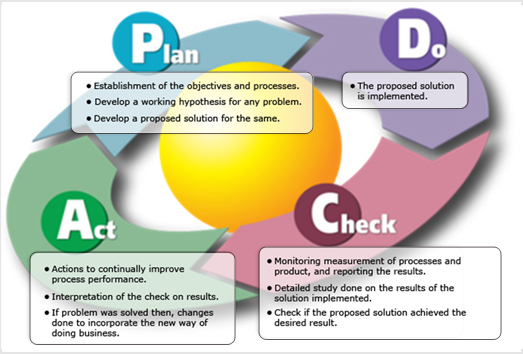How to Use It and Why Is It Useful In the Company?
The Deming Cycle or Deming Wheel is the key methodology for monitoring and improving business processes. The continuous search for quality and perfection is the main objective to improve business processes. The higher the productivity, the higher the profits: hence the use of the Deming Cycle from science to business.
Let’s see what it is, how it is applied in the company and what advantages it can bring to the entire company organization through a concrete example.
Deming Cycle: Where Did it Come From?
The continuous search for improvement and quality is a constant in every area of everyday life. We think about improving the quality of life, perhaps changing the way we eat, or moving to a different city to have more opportunities.
If we place this research on the company, the continuous improvement refers to the progress of the organizational process, but above all the productive one, with the aim of increasing production efficiently and without waste.
Born more than 60 years ago by W. Edwards Deming, the Deming Cycle or Deming wheel is the key methodology for monitoring and improving business processes.
It was first implemented in Japan, where over time it has been transformed and improved to be more efficient.
The elements on which Deming has based its work are essentially 2:
First of all, being able to put it into action for the continuous improvement of quality. Secondly, to reduce the defects, which is the consequence of the first element.
Deming Cycle: Planning
The Deming cycle is divided into 4 phases:
P – Plan: planning;
D – Do: execution;
C – Check: test and control;
A – Act: action.
Let’s start with the first phase of the Deming wheel: planning.
At this stage, Deming says that every business must plan to determine what results it intends to achieve.
The aim here is to analyze in the processes and in the product which factors are wrong and how they can be improved. Hence, it is crucial:
- understand what changes can be made to solve the problem encountered;
- establish how, operationally, this improvement can be achieved.
Deming Cycle: Execution
In the execution phase, instead of making a sudden and total change, a test is carried out on a certain area. The change is monitored, the results are read and, if necessary, a general change is made.
Basically, changes need to be made slowly to avoid making more mistakes, or that the change doesn’t bring the expected benefits (you’ll realize what we’re talking about later).
This phase, for Deming, is comparable to a scientific experiment, because through the use of easily measurable studies, it allows us to better understand the data received to improve the output and how it was possible to do it.
Deming Cycle: Test and Control
As the name implies, in this phase, the tests are carried out and all the results obtained are checked. Here, you need to ask yourself these questions:
- Do the results meet the forecasts?
- If they don’t respect them, why do they differ?
From here we understand what really worked and what didn’t, but above all we have to find out why it didn’t work.
Deming Cycle: Action
Understanding why, let’s move on to the implementation of the changes in a definite way. The project in progress takes shape and is implemented. We now know that to achieve result X we must act in a certain way that, possibly, can also be applied in other business contexts.
Deming Cycle Example

Having studied the theory, let’s now go to practice and make an example of the Deming Cycle applied to the company. In the present case, let’s imagine a company that produces bags.
Since we are talking about continuous improvement, the company in question, which deals with leather goods, decides to integrate the production of suitcases to increase profits. During the production process it is noted that the processing of leather, or other innovative and tech materials, as well as the assembly, take place in a linear manner.
The only slowdown is found in the posting of the wheels.
Through the Deming wheel (Plan phase), it is noted that the design of the wheels, made within the same factory, slows down the whole production. The machinery is in fact defective.
The company thus decides to intervene to at least stem the problem. Thus he decides, to avoid unnecessary waste, that the machine is bought again to test its effectiveness and understand if production improves or not.
Once the machinery has been bought, it is tested (phase Do) and checked, together with the machines already in the company, to verify whether it is worth investing in the purchase of something else or not.
However, in the check phase, nothing has changed in terms of speed: the employees are so used to the old machinery. Despite the more efficient operation than before, the production always remains stable. In addition, the new wheels, although perfect, are not easy to fit in the suitcases.
So in the last step (Act phase) it is decided to replace all the machinery and illustrate, before they are used, the instructions, so as to make them work in the best way avoiding throwing away badly made wheels and, at the same time, inserted badly into suitcases.
By doing so, the company improves both quality and production standards.